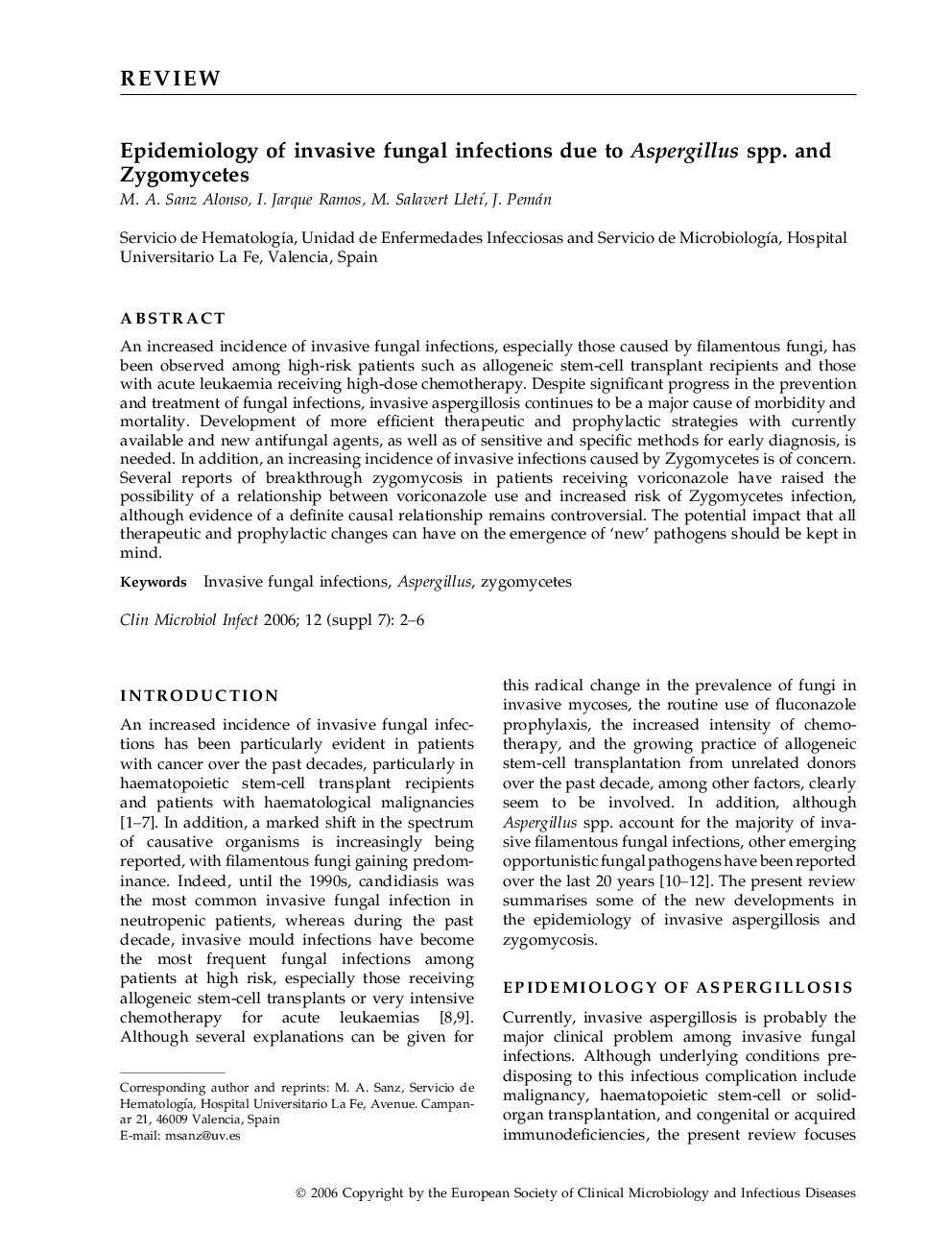| Article ID | Journal | Published Year | Pages | File Type |
|---|---|---|---|---|
| 3398466 | Clinical Microbiology and Infection | 2006 | 5 Pages |
ABSTRACTAn increased incidence of invasive fungal infections, especially those caused by filamentous fungi, has been observed among high-risk patients such as allogeneic stem-cell transplant recipients and those with acute leukaemia receiving high-dose chemotherapy. Despite significant progress in the prevention and treatment of fungal infections, invasive aspergillosis continues to be a major cause of morbidity and mortality. Development of more efficient therapeutic and prophylactic strategies with currently available and new antifungal agents, as well as of sensitive and specific methods for early diagnosis, is needed. In addition, an increasing incidence of invasive infections caused by Zygomycetes is of concern. Several reports of breakthrough zygomycosis in patients receiving voriconazole have raised the possibility of a relationship between voriconazole use and increased risk of Zygomycetes infection, although evidence of a definite causal relationship remains controversial. The potential impact that all therapeutic and prophylactic changes can have on the emergence of ‘new' pathogens should be kept in mind.
